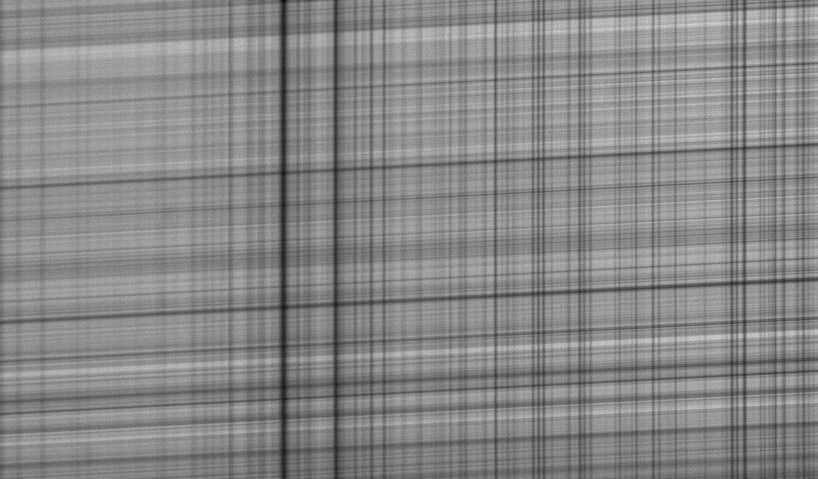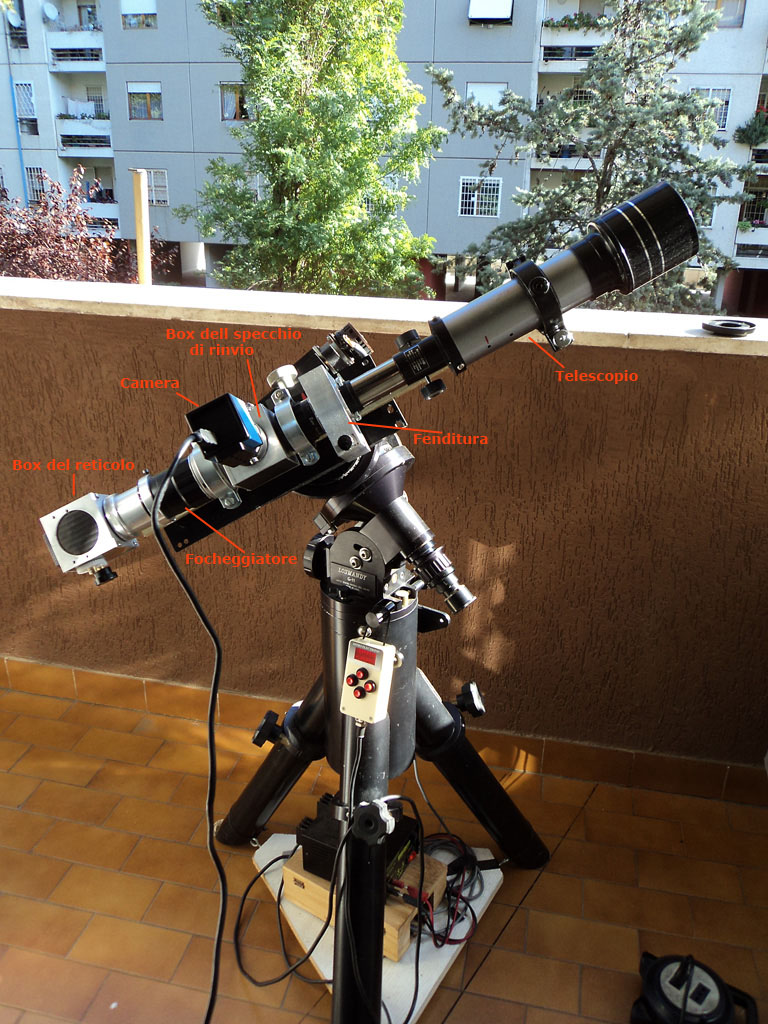
UPS
Ultra Portable Spectrohelioscope
La mia attività nel campo dell'imaging solare con la spettroelioscopia digitale mi ha portato a considerare sempre più necessaria una riduzione delle dimensioni e del peso dello Spettroscopio-Spettroelioscopio solare usato dall'amatore: i motivi sono ovvi: una minore dimensione e peso dello strumento porta ad una maggiore facilità di trasporto, ed a rendere più piacevole ed immediato l'uso dello strumento.Sono partito con HIRSS, HIRSS 2 e, con la serie degli autocollimanti, VHIRSS .Tutti ottimi strumenti, questi, ma, specie i primi due, pesanti e difficilmente trasportabili per più dei due-tre metri necessari per porli sulla montatura.Quest'ultima deve essere, inoltre, di dimensioni cospicue, almeno una EQ 6, una Losmandy G11 o equatoriali del genere.Tuttavia dimensioni e peso sono correlati alle focali usate per collimatore ed ottica di osservazione, da cui dipendono in buona parte la dispersione ed il potere risolutivo complessivo dello strumento, quindi non si può ridurle eccessivamente. La dispersione offerta da VHIRSS si aggira sui 0.02 A/pixel con pixel da 4,65 micron: si trattava quindi di verificare sino a che punto si potesse ridurla senza sacrificare in modo inaccettabile le prestazioni.Un primo tentativo in tal senso l'ho fatto con POSS , che attualmente trasporto ed uso con soddisfazione in convegni ed occasioni dimostrative, e che, con i suoi 0,05 A/pixel , fornisce buone immagini spettrali e solari.
Ho ritenuto di dover ridurre il più possibile dimensioni e peso senza scendere al di sotto dei 0,1 A/pixel (Sempre per camere di 4, 65 micron come la mia DMK 41, Lumenera, etc), che mi sembra il limite per ottenere immagini solari accettabili. Importante, inoltre, nella filosofia dello strumento, era la possibilità di cambiare con facilità sia il reticolo che il telescopio che invia l'immagine solare sulla fenditura, in modo da poter eventualmente aumentare le prestazioni, ove necessario.Possedevo già una buona parte dei componenti:un reticolo Edmund di 25mm di lato per 1200 linee per mm; un ottimo doppietto acro da 36 mm di D e 300 mm di F; una fenditura regolabile autocostruita, veramente robusta, in una scatola di alluminio da 4 mm di spessore: tale scelta è stata, come vedremo, obbligata, dovendo il "naso" della fenditura in pratica sostenere parzialmente il peso del cannocchiale usato per la proiezione dell'immagine solare, da questo seguiva che il tubo dovesse essere piuttosto leggero.In prima battuta ho quindi usato un rifrattorino 60/350 comprato al mercatino di Porta Portese per 20 €: certo, la qualità ottica lasciava a desiderare, ma il tutto era estremamente leggero e compatto: 70 cm di lunghezza per soli 3,5 Kg di peso (all'incirca quanto un rifrattore da 70 o 80 mm).L'obiettivo è stato raggiunto: una estrema compattezza e portatilità, tali da poter facilmente utilizzare e trasportare in una valigetta lo strumento, tra l'altro immediatamente scomponibile in tre parti :il box del reticolo, il corpo dello spettrografo ed il cannocchiale, la più grande della quale è proprio il cannocchiale stesso.Certo, la risoluzione del reticolo, da 1200 l/mm era media, ma mi sono ripromesso, ove necessario, di upgradarlo ad uno da 2400 l/mm; l'upgrade invece era molto più urgente per il cannocchiale, che ovviamente presentava dei limiti nell'ottica.Di seguito è un'immagine dello strumento nella sua prima versione.

Una delle prime immagini dello strumento: la riga Ha in emissione sul bordo solare
One of the first images of the instrument: Ha line in emission on solar limb

e le righe del Calcio ionizzato (Ca2K e H) a 393 e 396 nm.
and the lines of Ionized Calcium at 393 and 396 nm
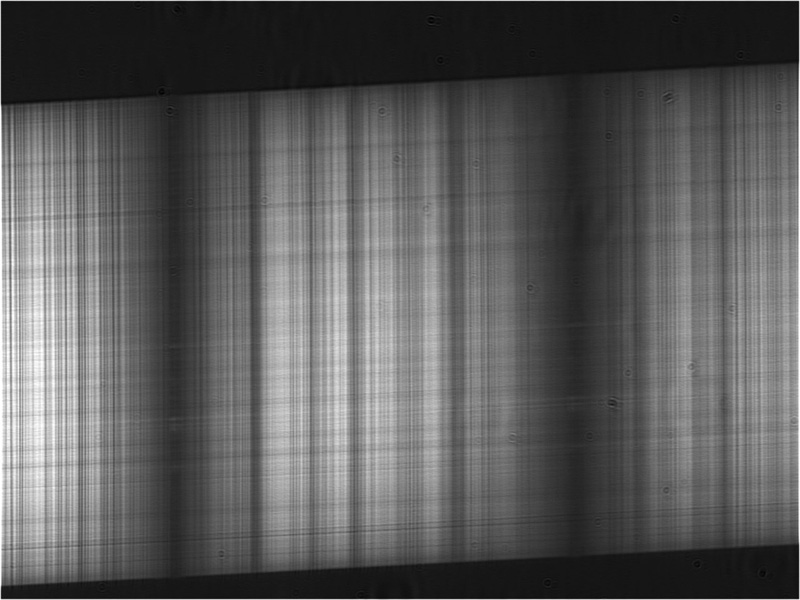
Le righe dell'O2 atmosferiche
The ATM O2 lines
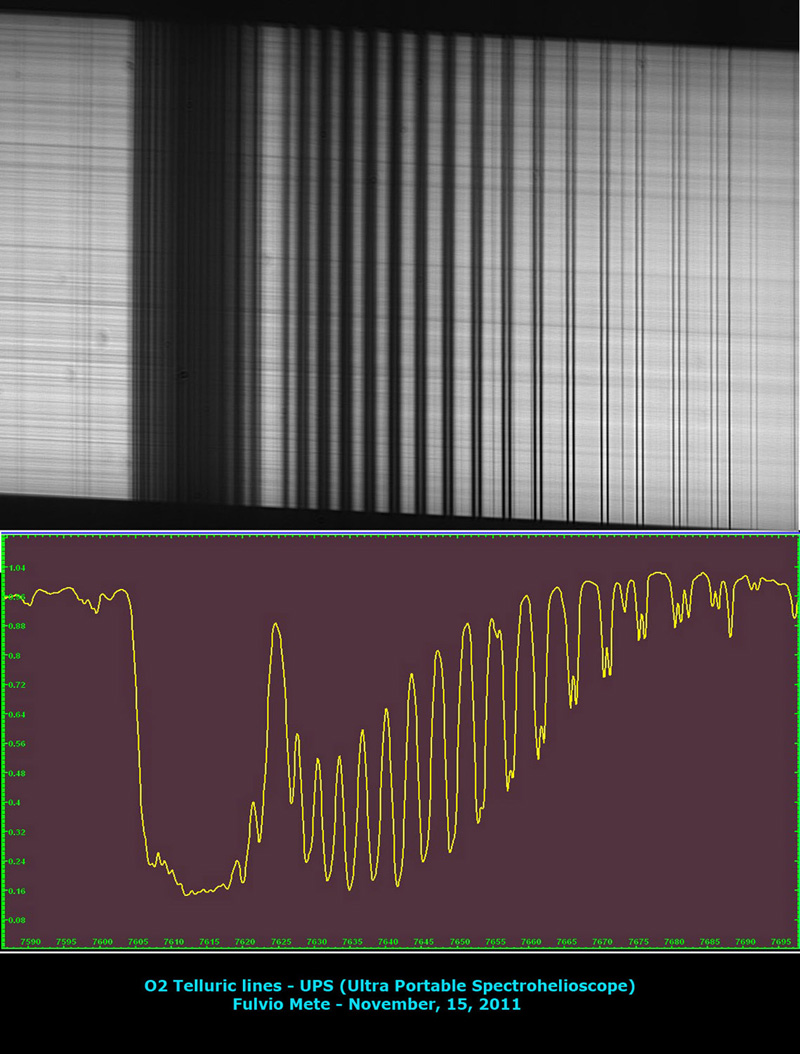
La prima immagine solare ottenuta con una scansione della riga Ha il 22 ottobre 2011
The first solar image obtained with a scan of Ha line on october, 22, 2011
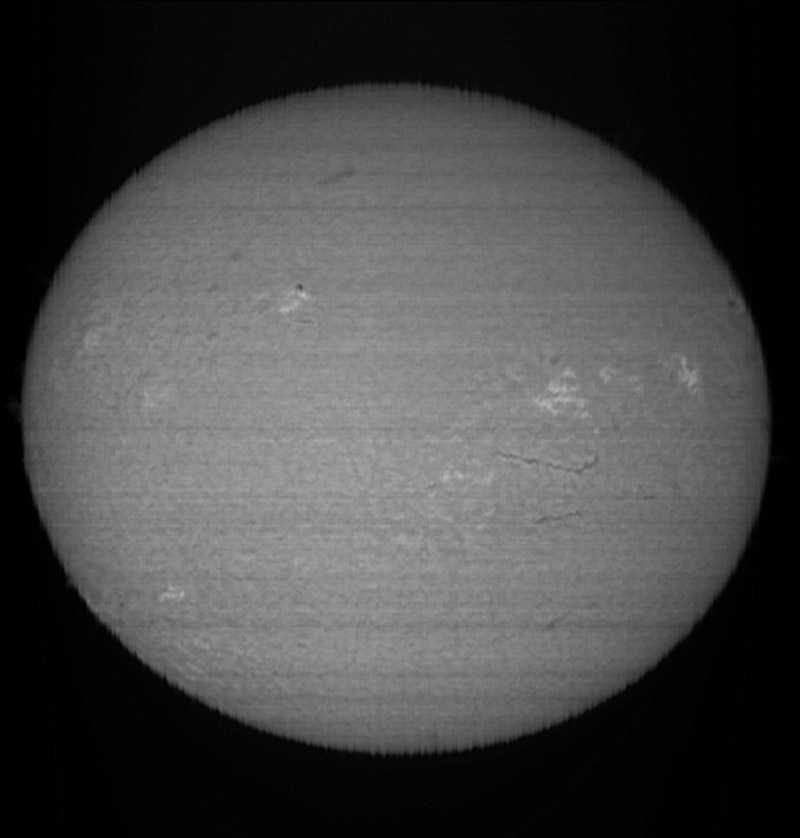
Lo strumento sembrava quindi funzionare correttamente, ed era piacevole da usare e da maneggiare; si trattava ora di migliorarlo, applicando un sistema di regolazione micrometrica del basculamento del reticolo intorno al proprio asse, e agiungendo un ottica di migliore qualità.Il primo problema è stato risolto, dopo qualche affanno, modificando il sistema ad ingranaggi (buono solo per spettri a bassa risoluzione, per il quale era stato concepito) con il solito sistema, primitivo ma funzionante e facile da costruire, del braccetto a molla con vite di blocco all'asse come frizione il braccetto è stato applicato al più piccolo degli ingranaggi di movimentazione.
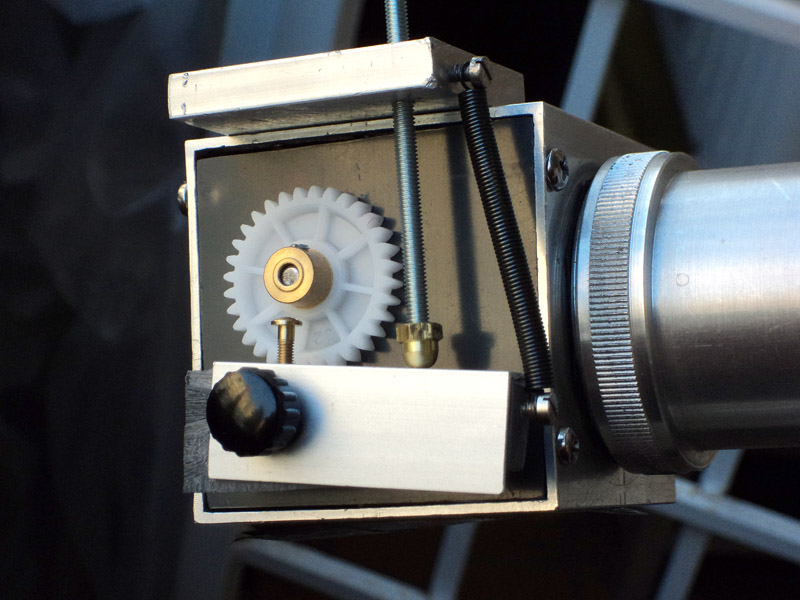
Il cannocchiale è stato quindi sostituito da un tubo ottico di un rifrattore Stein 60/415 made in Japan, anni 70, di buona qualità, anche se non eccelsa, acquistato nel solito mercatino a 30 €. Il peso e le dimensioni complessive sono rimaste invariate.
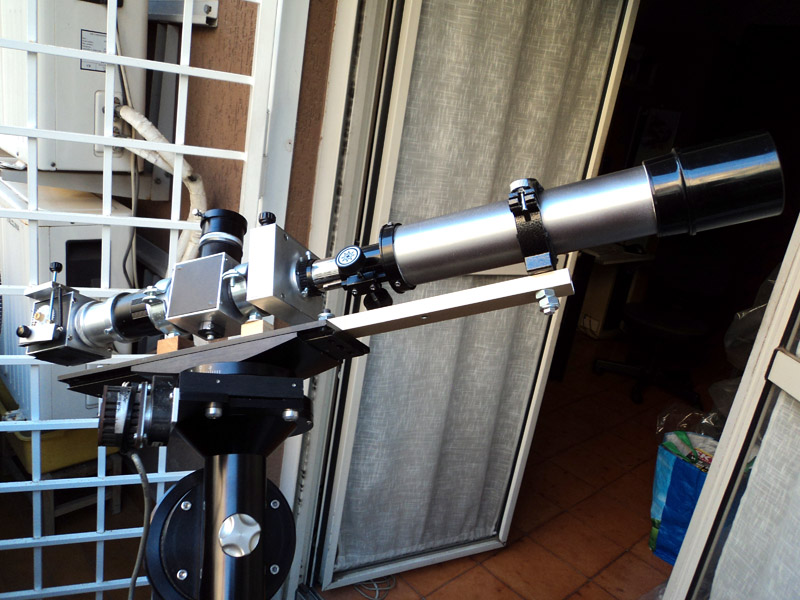
Il doppietto del sodio a 5890 e 5896 A con la nuova configurazione (le righe trasversali sono dovute ad imperfezioni della fenditura, chiusa a circa 30 micron). Tra le due righe principali sono visibili circa sette righe secondarie, quella del Nickel ed altre ATM.
